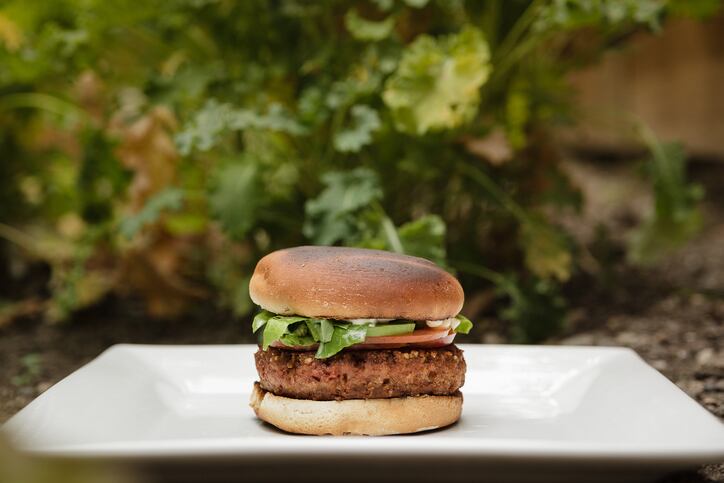“At the present time, there is an ongoing search for healthier meat products that target appetite control," wrote the scientists from the University of São Paulo. "Meat and meat products represent a standard reference for modern human nutrition because of their high-quality protein content, essential amino acids, excellent concentration of B vitamins, [...] and high satiating power.
“However, consumers believe that with excessive consumption, the nutritious benefits of meat and meat products are negated by such food presenting a high animal fat content that has been related to increased risk of heart disease.”
In order to test the palatability of healthy meat, the researchers added various amounts of wheat fibre – 1.25g; 2.5g; 3.75g and 5g – to an 80g burger patty.
They then asked consumers to rate the taste, texture, aroma, satiety and other sensory characteristics compared to pure-meat control burger.
For overall quality, there were no differences between the 3.75g added fibre and control burgers.
“The other samples enjoyed acceptance similar to the control,” wrote the authors. “This result is very positive because it demonstrates that substituting fat and meat with hydrated wheat fibre in burgers with up to 3.75g fibre in the portion of 80g does not affect the sensory acceptance of burgers in general. In addition, as wheat fibre WF200 Vitacel presents a neutral aroma and flavour, it did not negatively influence the acceptance of the samples.”
Participants reported the same level of satiety after eating the ‘source of fibre’ and ‘added fibre’ burgers as the full meat burger.
In Brazil, food manufacturers may make a ‘source of fibre’ claim if it contains at least 2.5g per portion while ‘high fibre’ claims are authorised for foods with a minimum of 5g of fibre per portion.
The country's 2014 dietary guidelines have recommended eating foods high in fibre.
“Animal foods are usually good sources of proteins, vitamins, and minerals, but contain no dietary fibre, and when fatty are energy dense and contain excessive amounts of unhealthy saturated fats. Substantial consumption of such foods increases the risk of several chronic diseases,” they read.
“Foods of plant origin are often good sources of dietary fibre and several nutrients, and almost all are low in energy density. But they need to be consumed in combination to supply an adequate range of nutrients.”
The study
The burgers were prepared using beef meat and pork fat as well as Vitacel WF200 wheat fibre that was hydrated with 6g water for 1g of fibre.
Vitacel WF200 is a white, fine-grain dietary fibre. It has a neutral taste and is used to add fibre, reduce fat, improve texture and control moisture migration. It contains 94.5% insoluble fibre, 2.5% soluble fibre, and is comprised of 74% cellulose.
Thirty-three individuals who regularly ate burgers took part in the satiety test while 103 people rated the sensory attributes and consumer acceptance of the burgers. They were served an 80g hamburger in a bun accompanied by either a zero-calorie orange juice or water in white light cabins.
Texture analysis showed that reducing the meat and fat content by increasing fibre reduced the hardness, elasticity, and chewiness of the burgers, but did not affect cohesiveness.
Adding hydrated wheat fibre did not lead to significant differences in the aroma in any of the burgers, although individuals rated the high-fibre burger less highly for taste, succulence, and texture.
Overall quality was rated similarly to the pure meat burger.
Dietary fibre, or roughage, has important functional properties in the human body, and is known to reduce the risk of cardiovascular disease, diabetes, hypertension, obesity, and some gastrointestinal diseases and cancers, wrote the researchers.
Source: Meat Science
Available online ahead of print, doi.org/10.1016/j.meatsci.2018.08.010
“Partial replacement of meat and fat with hydrated wheat fibre in beef burgers decreases caloric value without reducing the feeling of satiety after consumption”
Authors: Larissa Tátero Carvalho, Manoela Alves Pires, et. al.




